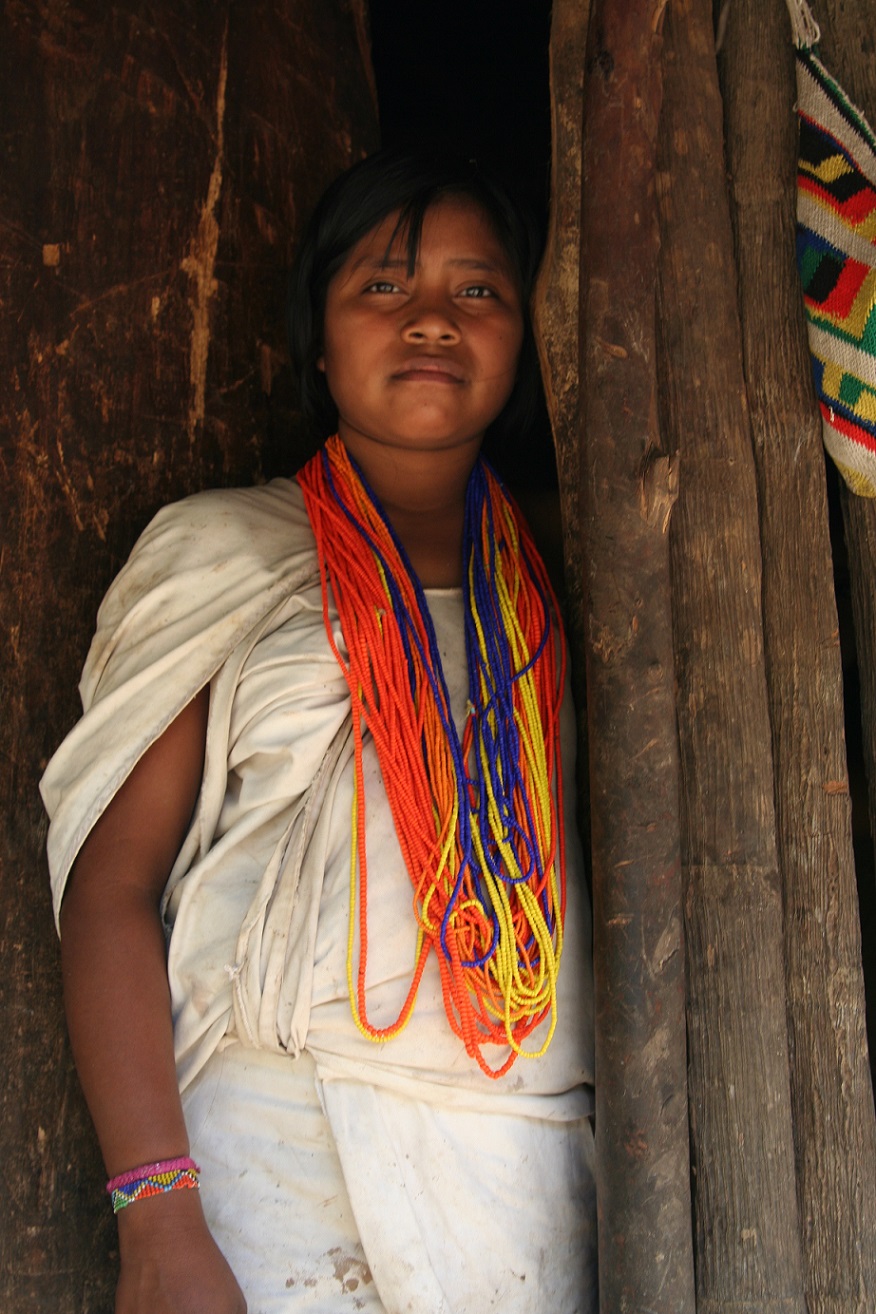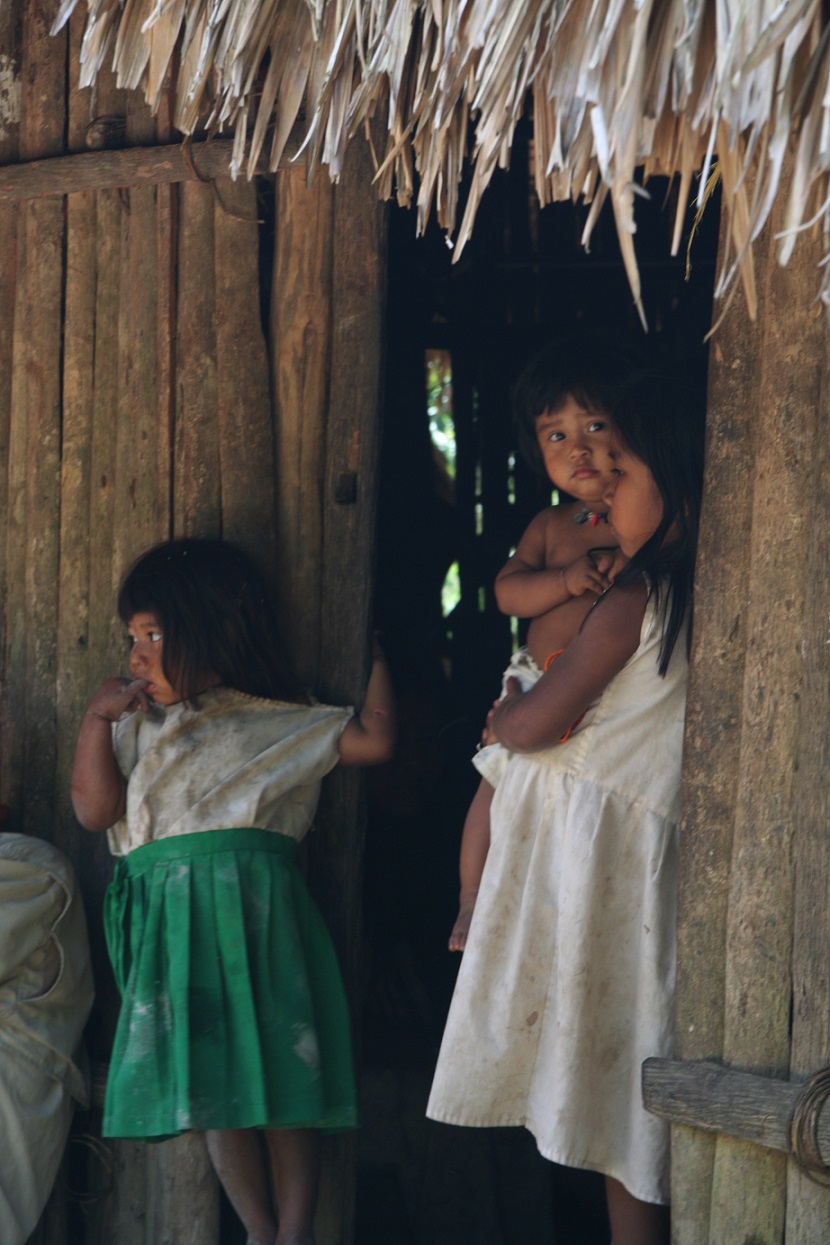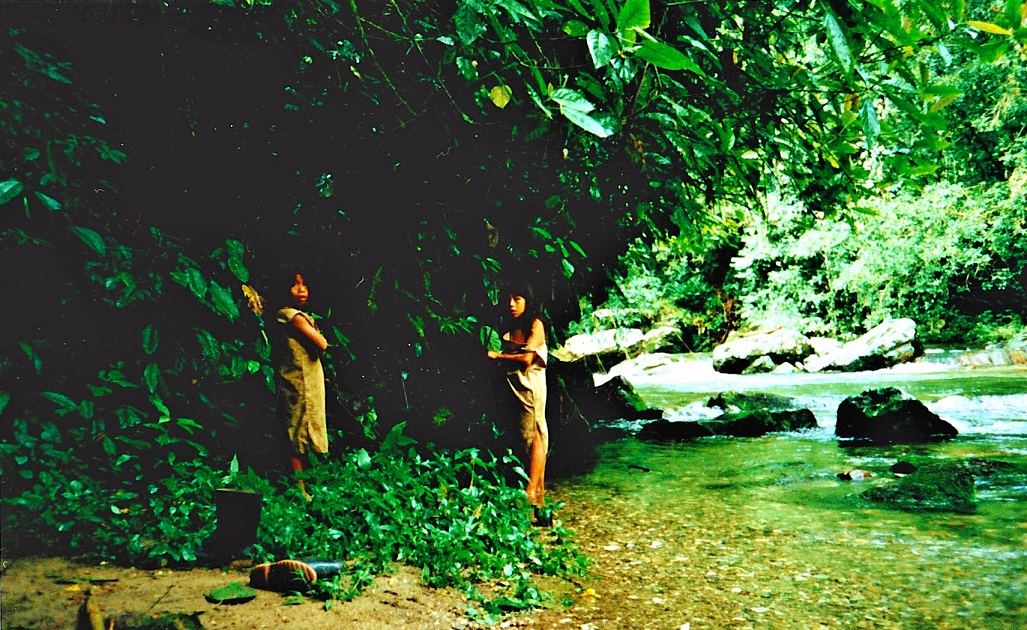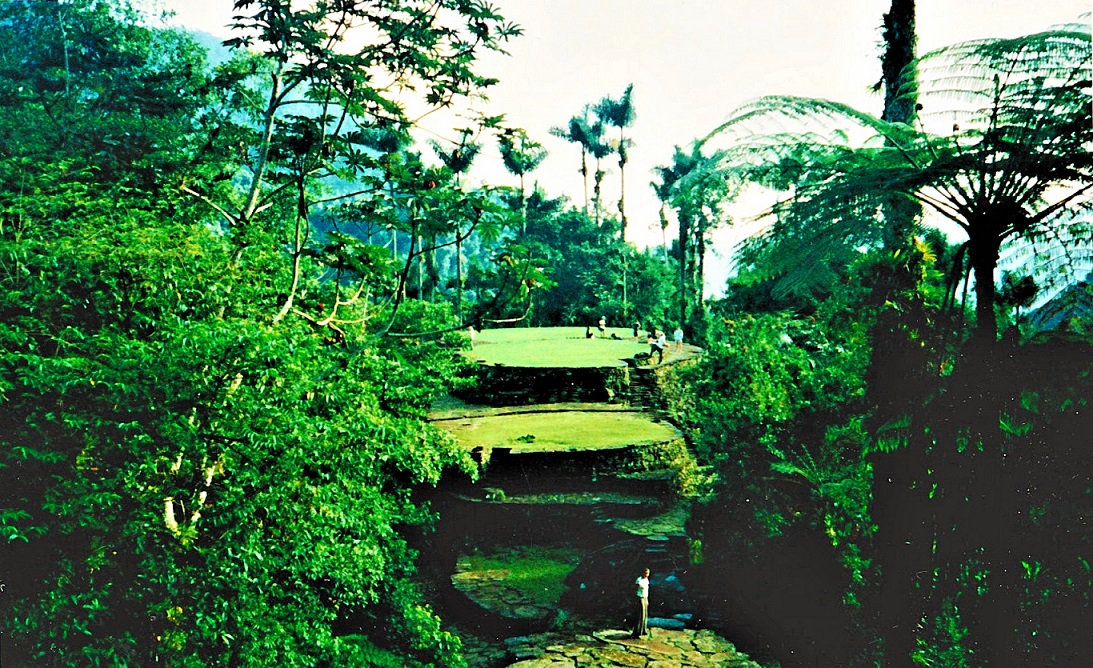Since the time when the creator god Kakua Serankua put the Sierra Nevada de Santa Marta in their hands and gave them the task of respecting it, the Koguis – Older Brothers of the Human Race – began to fulfill his plans.

Mónica del Pilar Uribe Marin
And they have protected the Sierra according to their founding laws, not selling or hiring it out, without exploiting it, preserving its woods and mountains, because from the Older Brothers they acquired their philosophical and scientific knowledge. So, it is written in each stone, hill, lake and river, so it is sung and told by the different animals, historical sentinels of their deeds.
Because on this triangular massif which forms the Sierra, covering an area 42 Km wide in the northeast of Colombia, and wooded with pines up to a height of 5,775 metres above sea level, the Koguis have stuck to the traditions they inherited from the Tayronas. From those traditions they know that they were there, on a high hill with four sides called Bunkuanarrua, where the world was first given light, according to the design of their creator gods, Siana Mung, Abu Siukukui, and Serankua. By him, through elements of daily life, of events, imagination and the projection towards the occult they have constructed stories to explain the essence of being human and the balance that must be maintained with nature.
The Temple and the Guardians
The Sierra may be the largest temple in the world, since its 51 renowned sites for payments (the spiritual cost that they pay to the founding fathers for a benefit that they expect to receive) make up what is called the Black Line, an extensive sacred place from which they make offerings to the sea, the rain, war, death, hate, droughts, the mountains, the animals, . . . everything, … . seeking a true harmony.
The four thousand members of the Kogui community share their ancestral heritage with the Wiwa-Arsario, the Awarcos and the Kankuanios, whose boundaries lie along three neighbouring departamentos: Magdalena, Cesar and Guajira. They possess a unique linguistic family (Chibcha), speak different languages, share similar forms of dress, religious principles and traditions, for the conservation of the Sierra, the centre of their world and the essential source for maintaining the equilibrium of the universe.
They are the guardians of all the water sources and the snow-covered peaks. It is there that all the wealth is found that serves them for sustenance, and not only them but also the other inhabitants of an immense region, as well as the reptiles, snakes,pumas, jaguars, small tigers, bears, monkeys, deer, foxes, condors, eagles, macaws, vultures, and thousands of other birds.

Customs and way of life
From the time of the Tayronas they have maintained traditions and architectural knowledge for building – once permission is given by the Mama and the divinatory rites carried out – villages and settlements, in the centre of which is placed the ritual house or “Cansa Maria” . Around this they build her residence, two small houses: one for the man and the other for his wife and children. Or they build magnificent bridges and enormous arcades from wild Guava wood, lianas and cana boba.
Their social system includes a way of farming and manufacturing as well as making artefacts in gold, copper, and the Copper/Zinc alloy Pinchbeck, although these materials are difficult to extract from minerals.
They also make artesanal work in iron , aluminium or clay, and weave valuable rope hammocks, buzas to carry children on their backs, and rucksacks.
They live from the land, and renew their agriculture using the pre-Colombian system of clearing and burning: then they sow and harvest malanga root, potatoes, yucca, spring onions, arracacha (garden root vegetable originally from the Andes), beans, maize, plantain and bananas . . . products that they eat accompanied by brown sugar, the fermented cane juice called guarapa, and coffee obtained through trading with the Creoles. Inside the temple, reclining in hammocks or on primitive seats, important indigenous figures apply the law, debate problems of the community and impose sanctions. The women stay with their children in the family house, a circular arbor of wood, branches and clay, with mud walls and a single door, intended to maintain the privacy and intimacy of the home.
Upbringing and Education
Before a child is born, the Mama holds a conversation with the parents-to-be, for several days, sitting on the small hill, they ask for health and happiness and burn frailejon leaves during the nights and make “amburos” or exorcisms over the beneficial foods that the infant will have to eat.
On their journey to wisdom and learning – determined according to the caste to which they belong – is the áyu (Coca leaf) and they are given the responsibility of cultivating it and deciding who can sow its seeds and regulating its use, because it is a sacred plant, used for communicating internally, with the Sierra and with the world outside, that cannot be traded except for salt, meat or brown sugar, and from which the philosophy and morals of the community originated.
The life of each individual is determined by the Mamas, tribal priests whose destiny is chosen at birth by a Mama, who informs the father of his decision to build a separate house for the infant, far from his siblings, and prohibiting him from consuming meat and salt.

When he reaches the age of five, he is handed over to a Mama, in order to receive knowledge that will enable him to overcome illnesses and evil forces. The community must look after the Mama, and bring him firewood, food and the harvest of his tribe.
The Other Life
The dead, are placed in their sleeping hammocks, to be carried to their resting place, wrapped in their clothes, seated in a posture of mystery , with their hands laid across their chest. Their corpse is buried with some of their belongings and a mud pot of food, in a grave with a side-chamber. Murder and executions are not part of their tradition and their respect for human life in all times and places is sustained by innumerable myths and stories. The physical and spiritual equilibrium of the Sierra Nevada depends on the Sacred Places or places of payment.
Peace will return their when the indigenous peoples also return to making their payments and traditional ceremonies, but today, due to eviction and expropriations of land, the sacred places are mostly in the hands of the ” Zunalu” (white man).
The Mamas tell how conflicts have existed since ancient times and their splendor has been diminished since 1525, when European greed brought their yearning for conquest to the Bay of Santa Marta, and they began to plunder the wonderful cities and steal the precious artefacts made by the Indigenous peoples. After that they faced the religious colonization of the middle of the century: things were unbearable between 1908 and 1916 with the establishment of the Capuchin Mission. It was a time of struggle, also within the communities, because the older Mamas opposed the conquest and were hunted down and tortured, along with all those who did not accept the embrace of “civilization”.

The Lost World
Many were forced to abandon their lands, many found themselves obliged to become farm labourers or hired workers on lands that once belonged to them. While priests and politicians argued over the sovereignty of the country. Later they urged the government to restore their protection, but with unsatisfactory results, because it had not been possible to preserve the records where the titles to their lands had been established. All this is without considering that the Sierra has served as a refuge for different groups since Independence. And during the Thousand Days’ War (1899 – 1902 ), peasants evicted from their lands also began a process of intense colonization there. Then there was the massacre of the banana producers, and later the political violence of the 40’s and 50’s. Again in the 1990’s and 2000’s the Sierra became the battleground of different groups: paramilitaries, the National Army and the guerillas.
Thus the indigenous people were forced to leave their land and farming, causing inadequate diet, malnutrition and epidemics to increase at an alarming rate. The Koguis say that besides giving material life so that the world can wake up each day, in their spiritual testament Siana Mung and Siukukui gave responsibility to the Older Brothers to advise the Younger Brothers so as not to make wars, kill people nor cut down the forest. But the Younger Brothers never listen to them.
(Translated by Graham Douglas – Email:ondastropicais@yahoo.co.uk) – Photos: Pixaby












.jpg)












